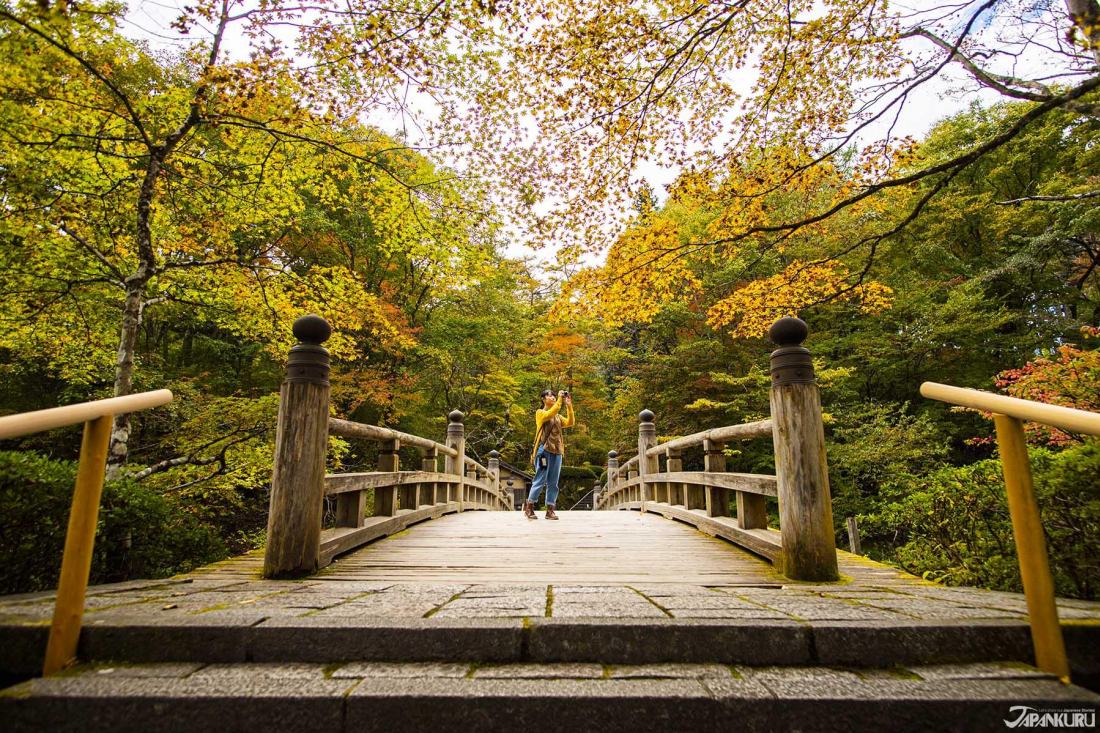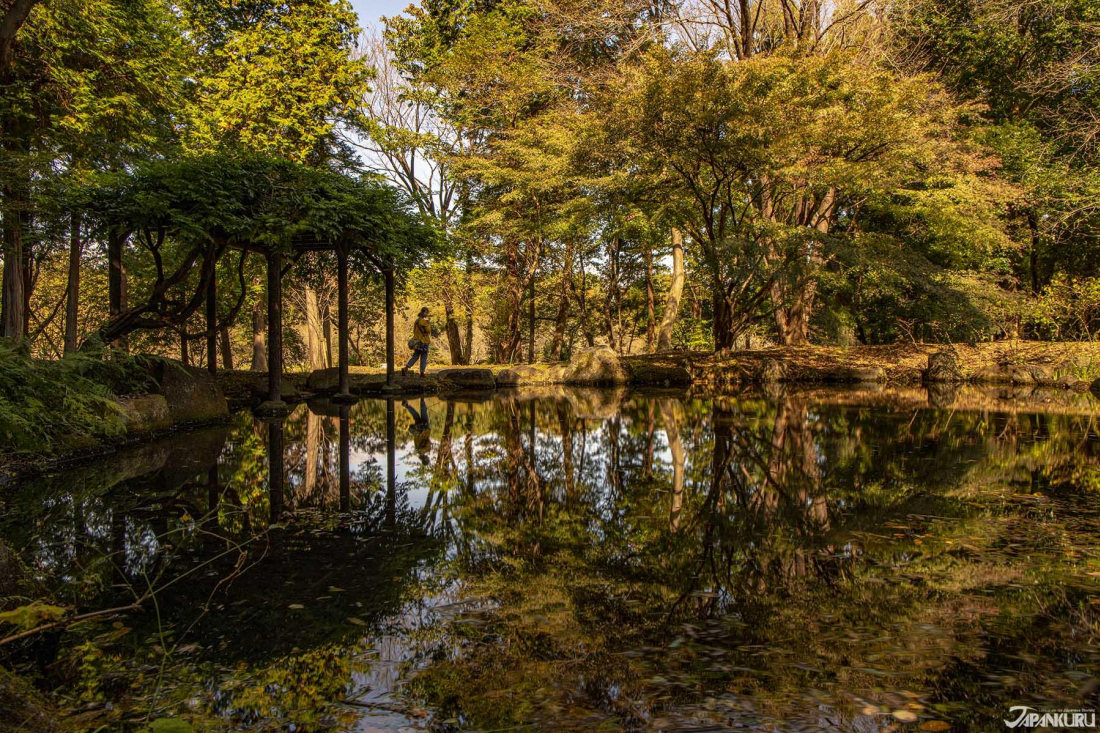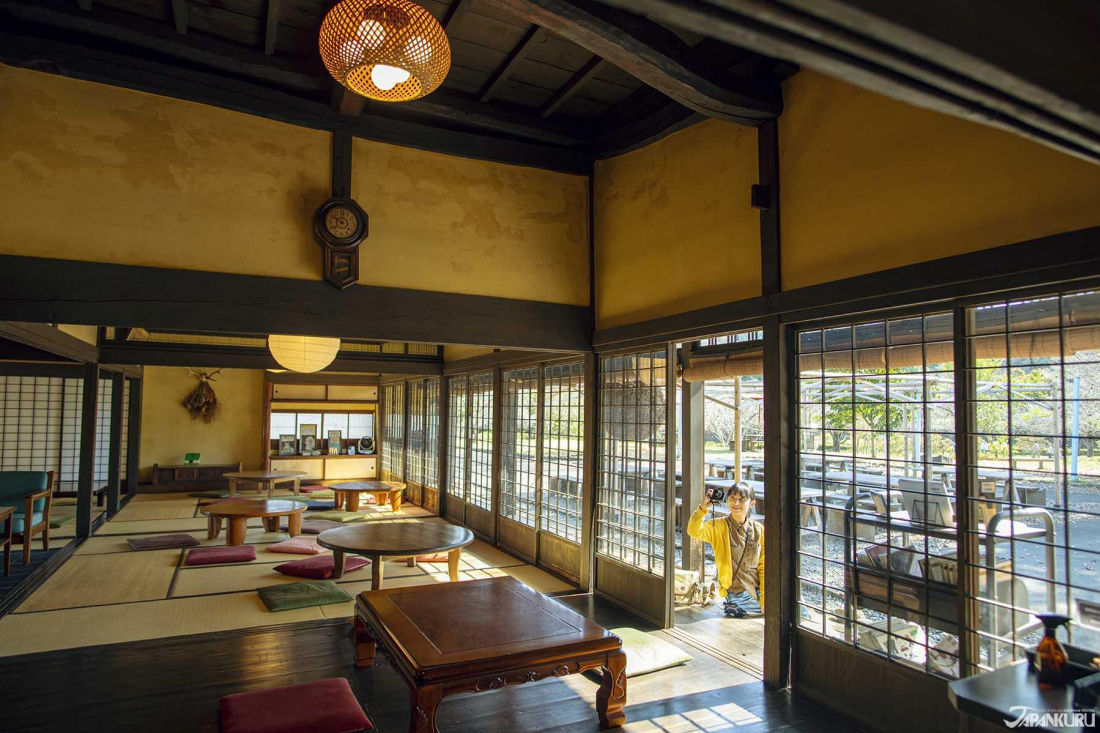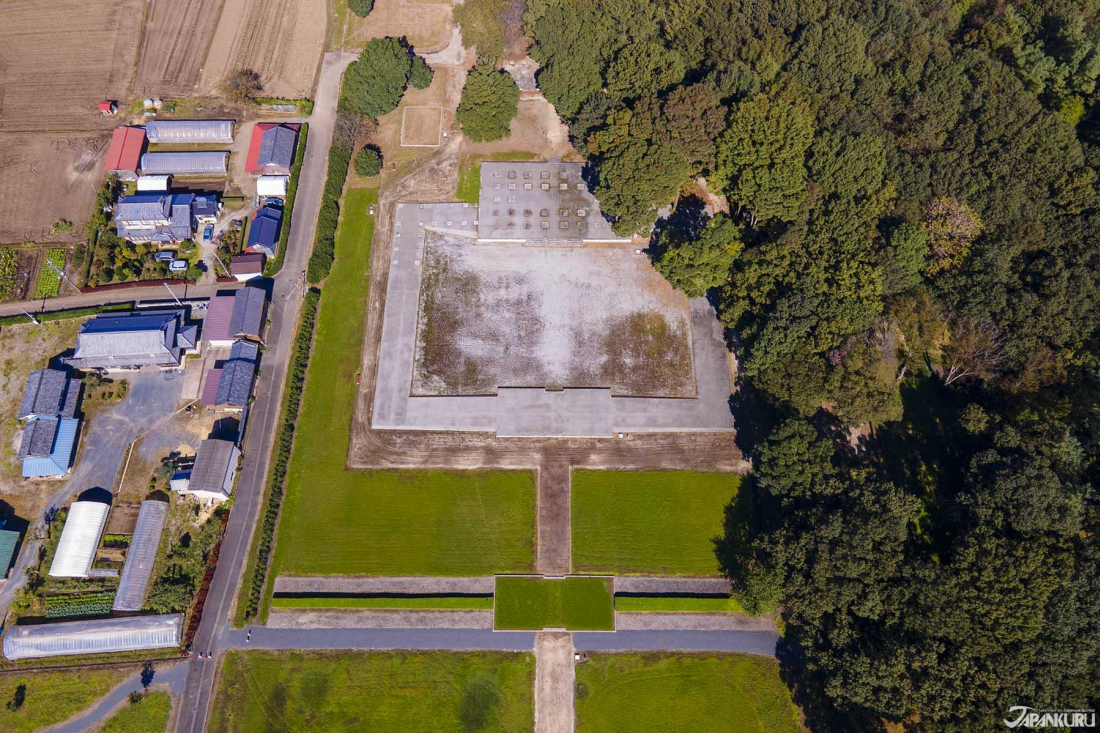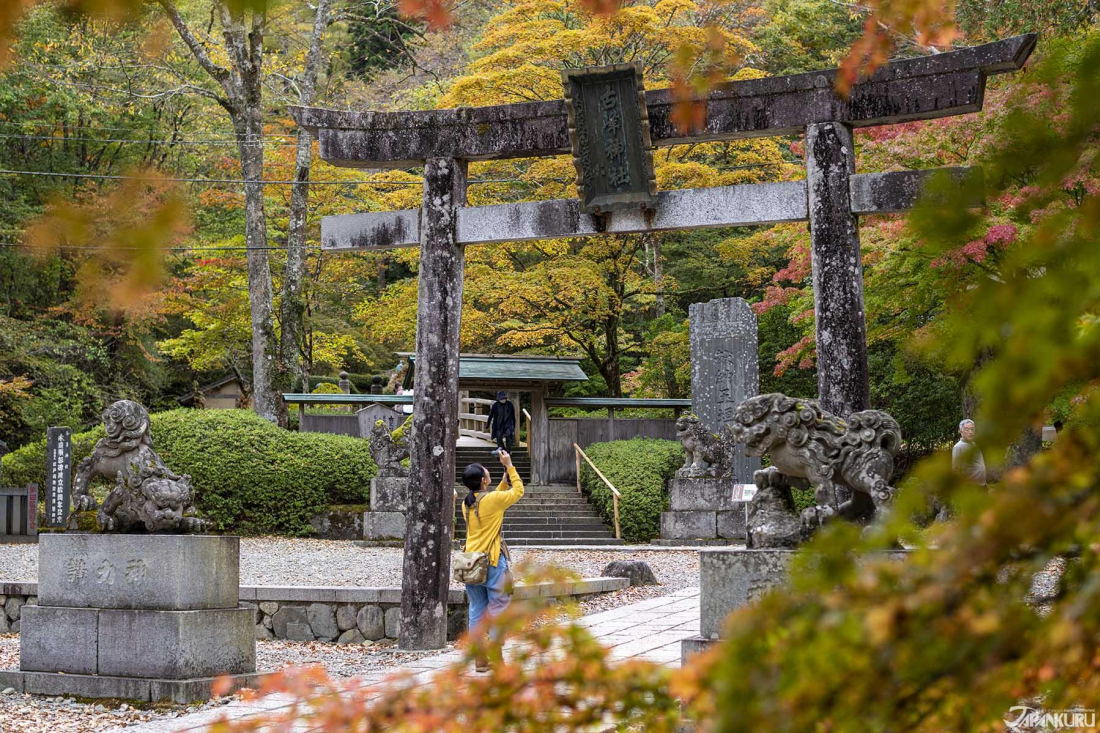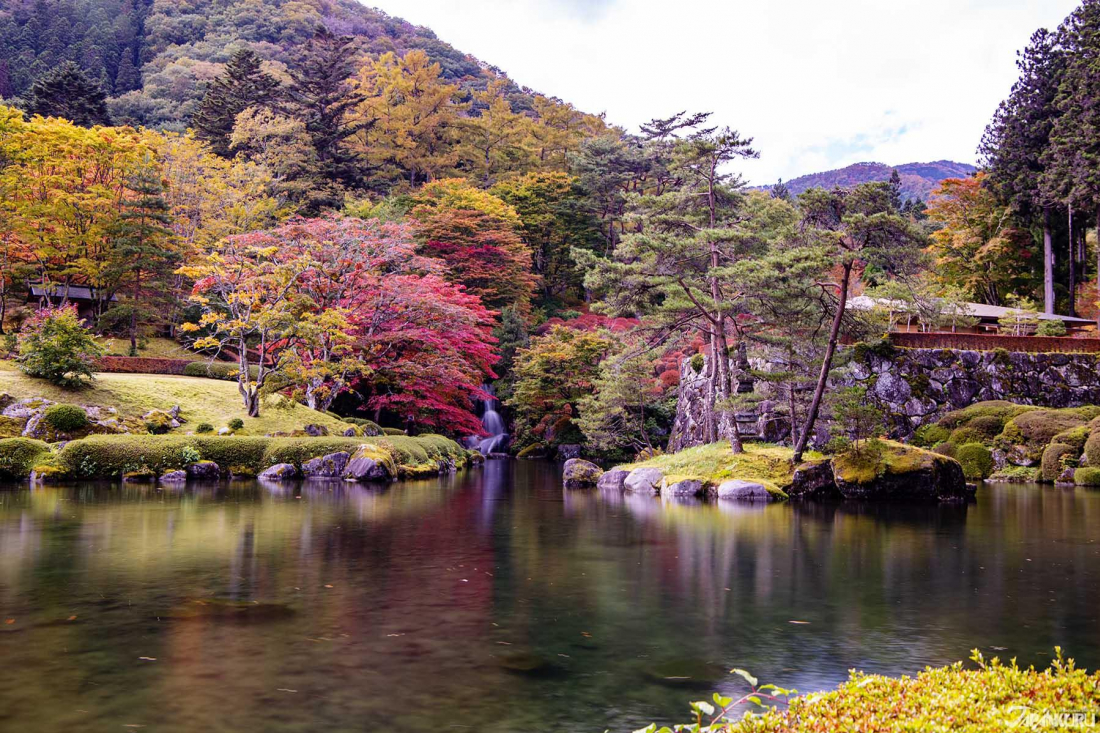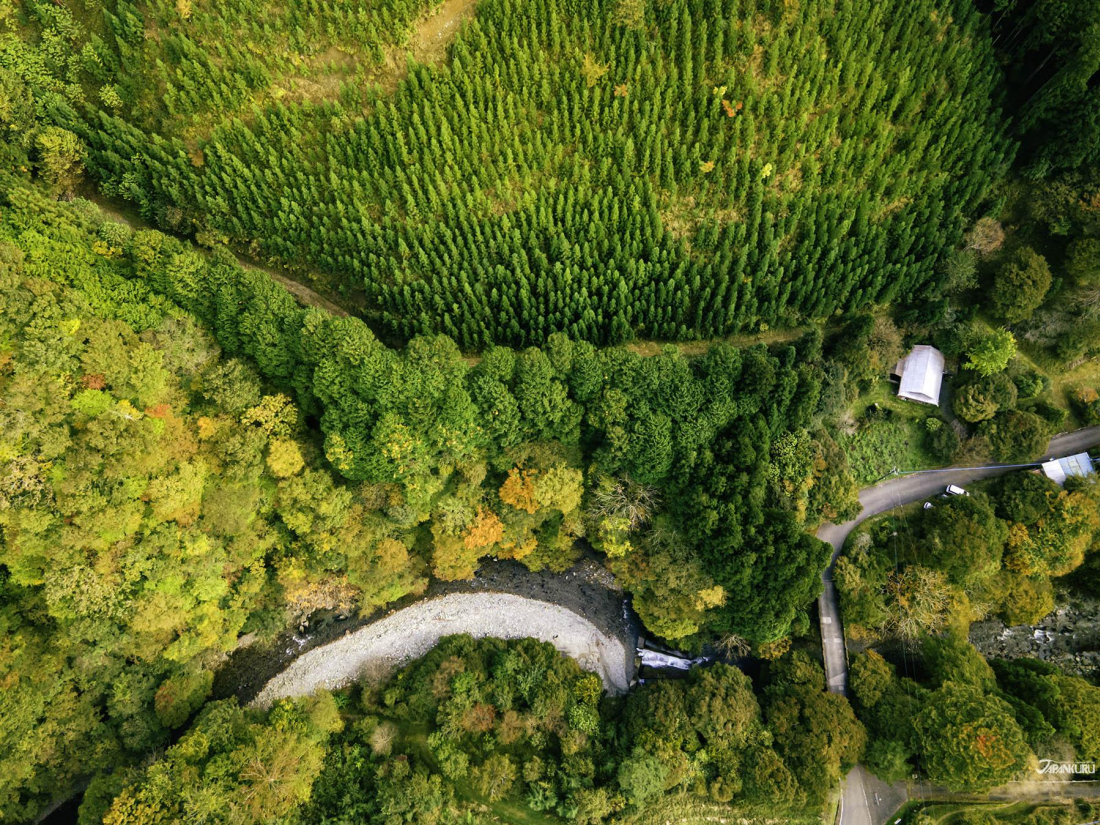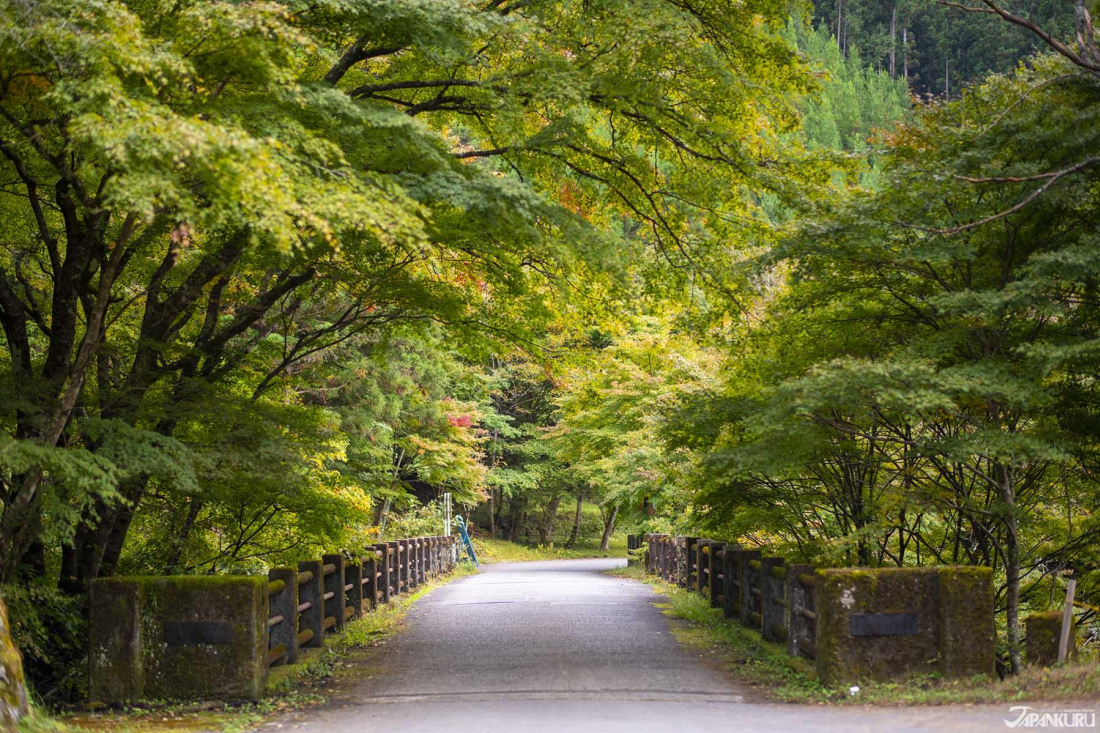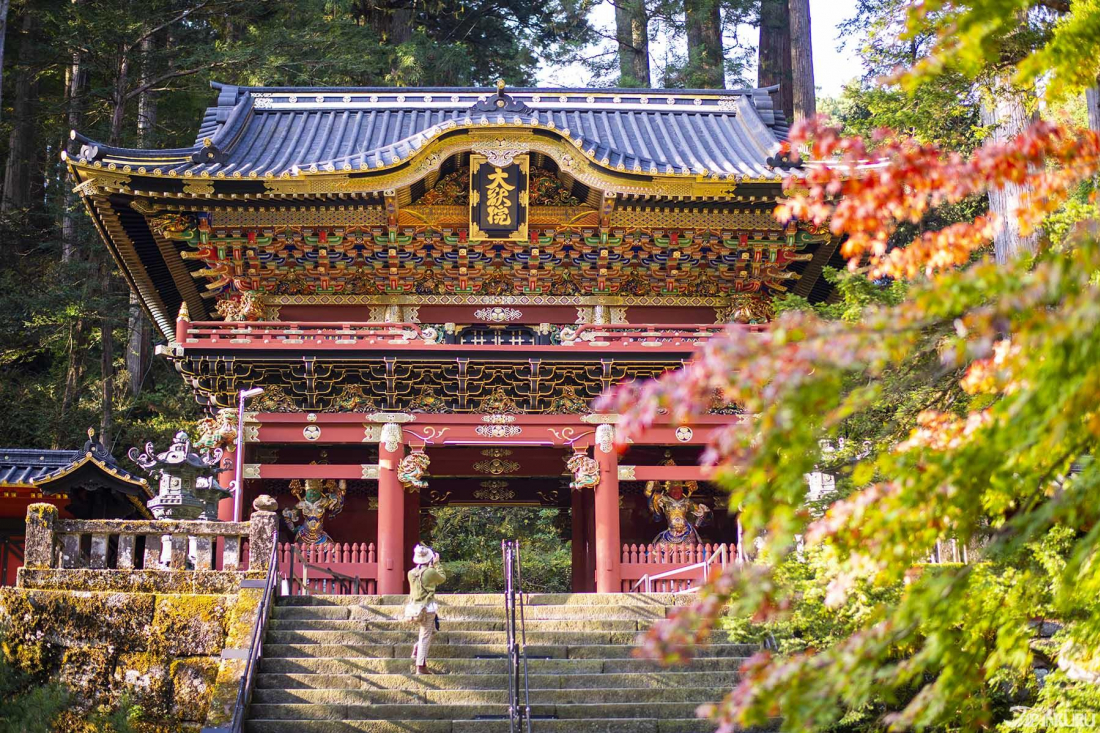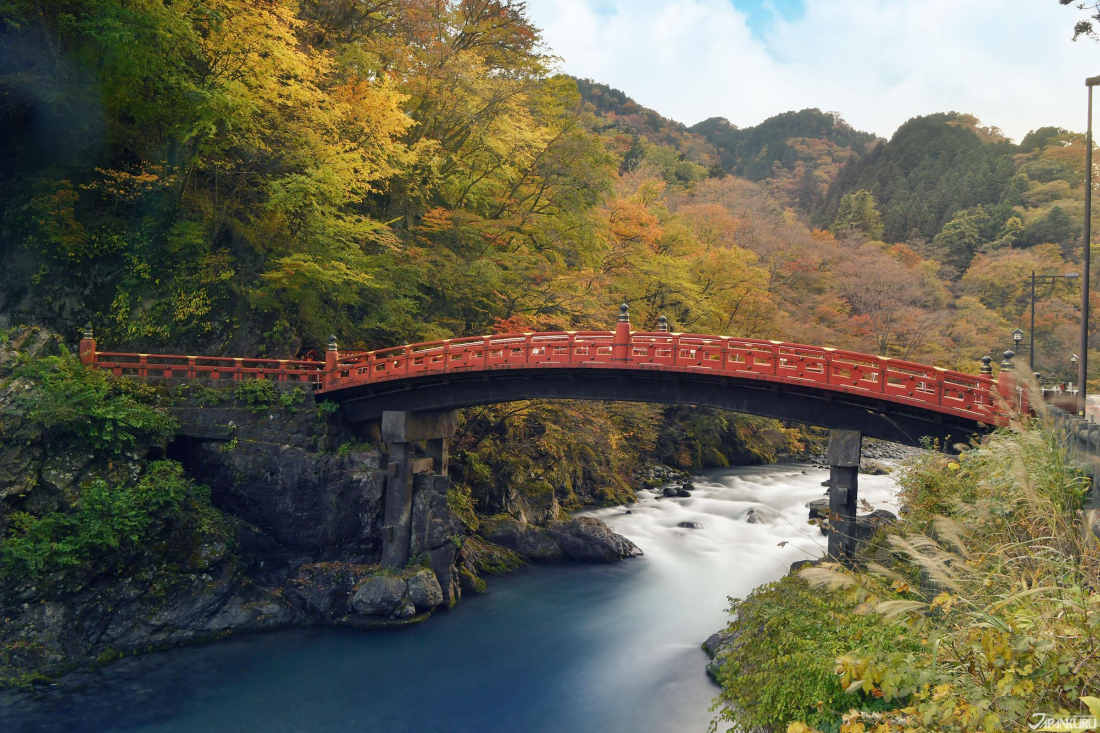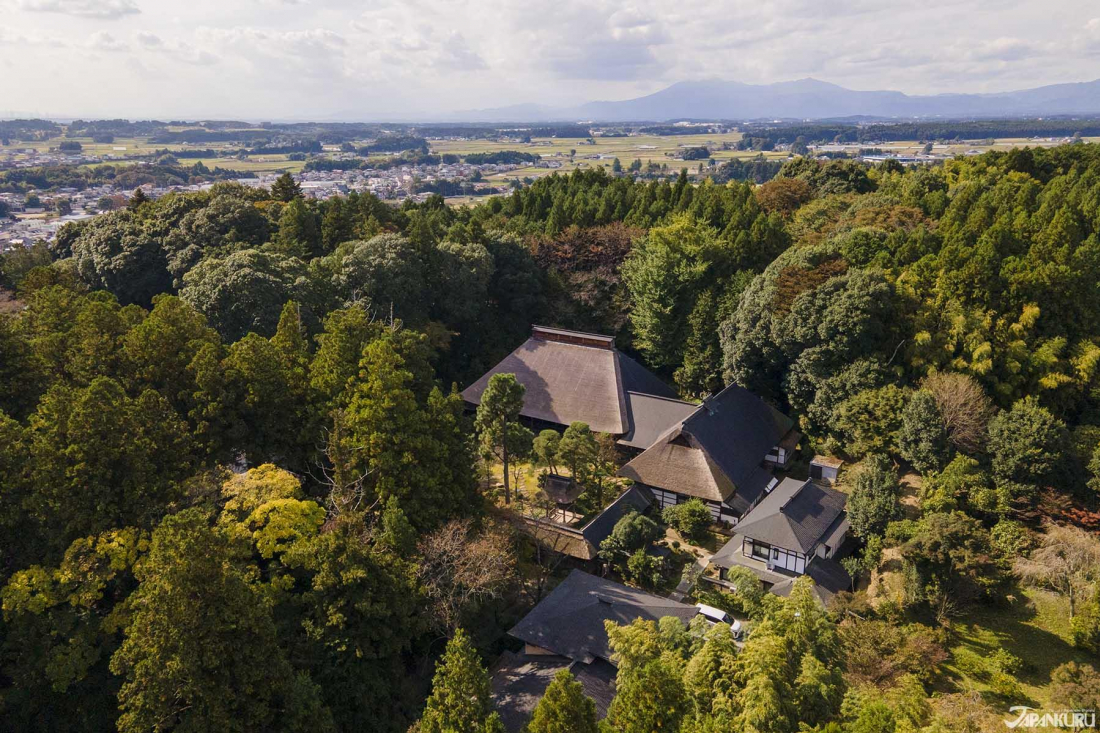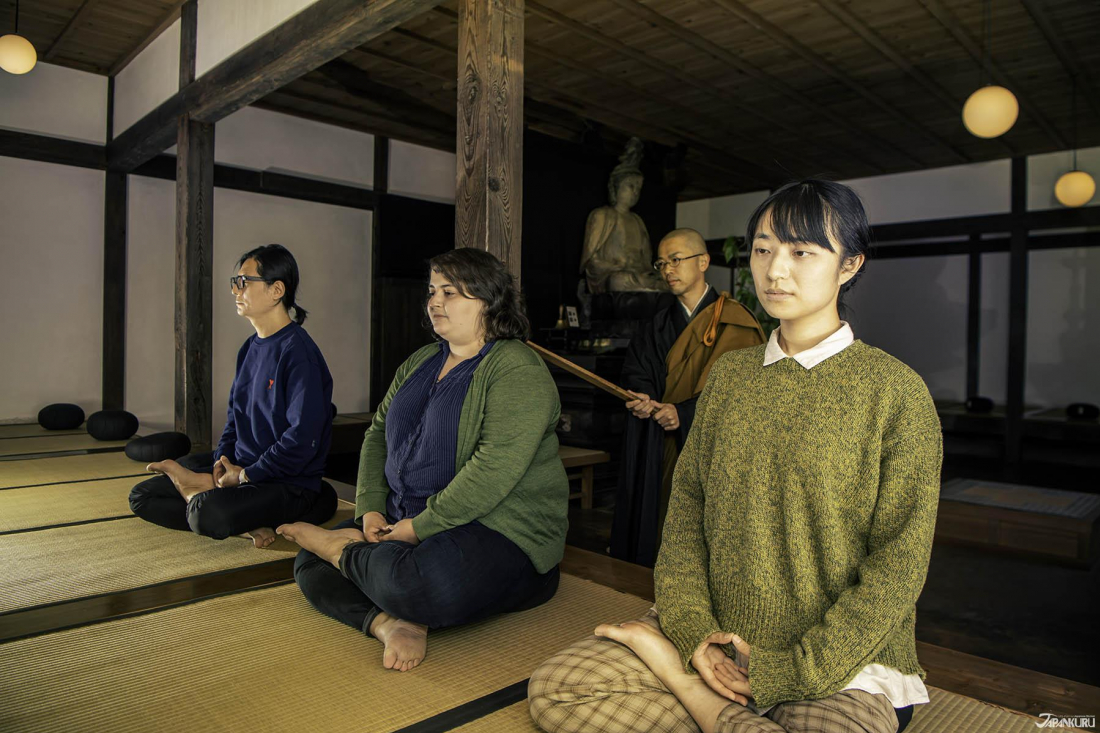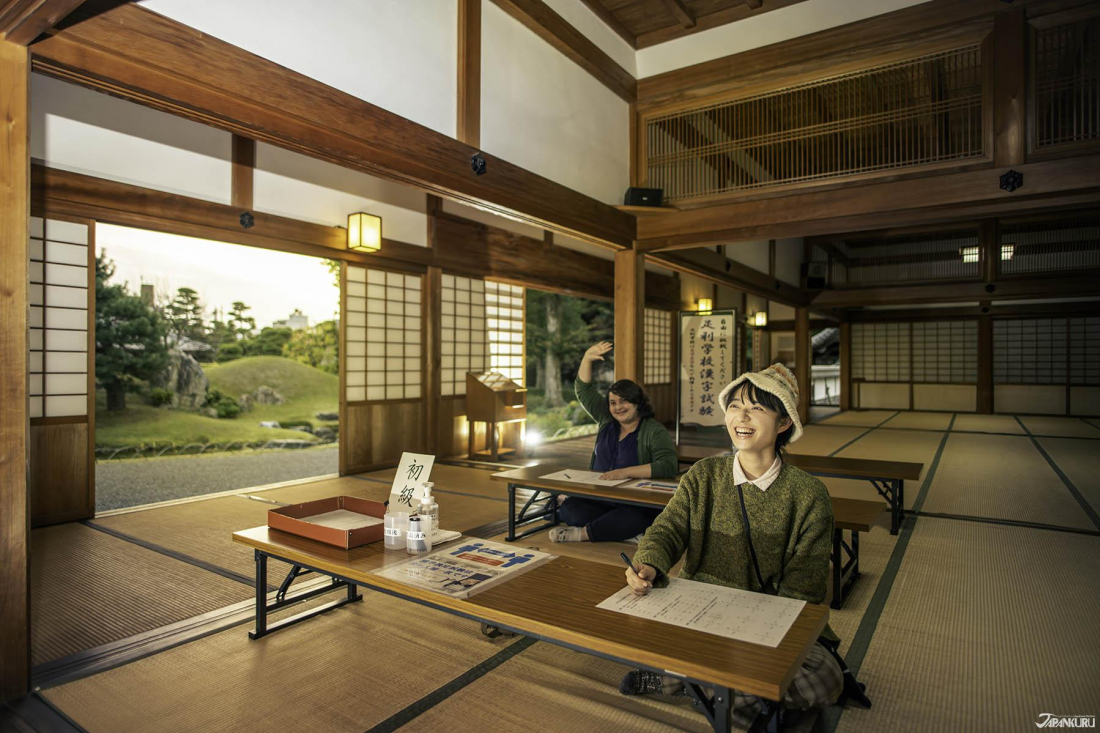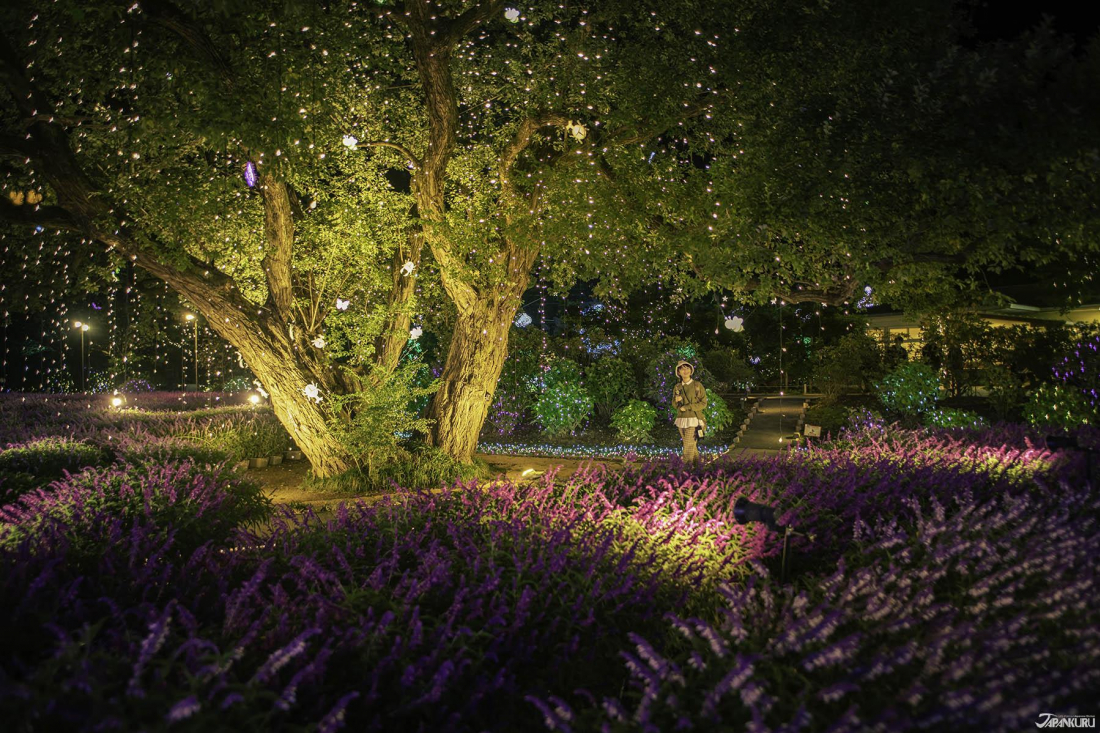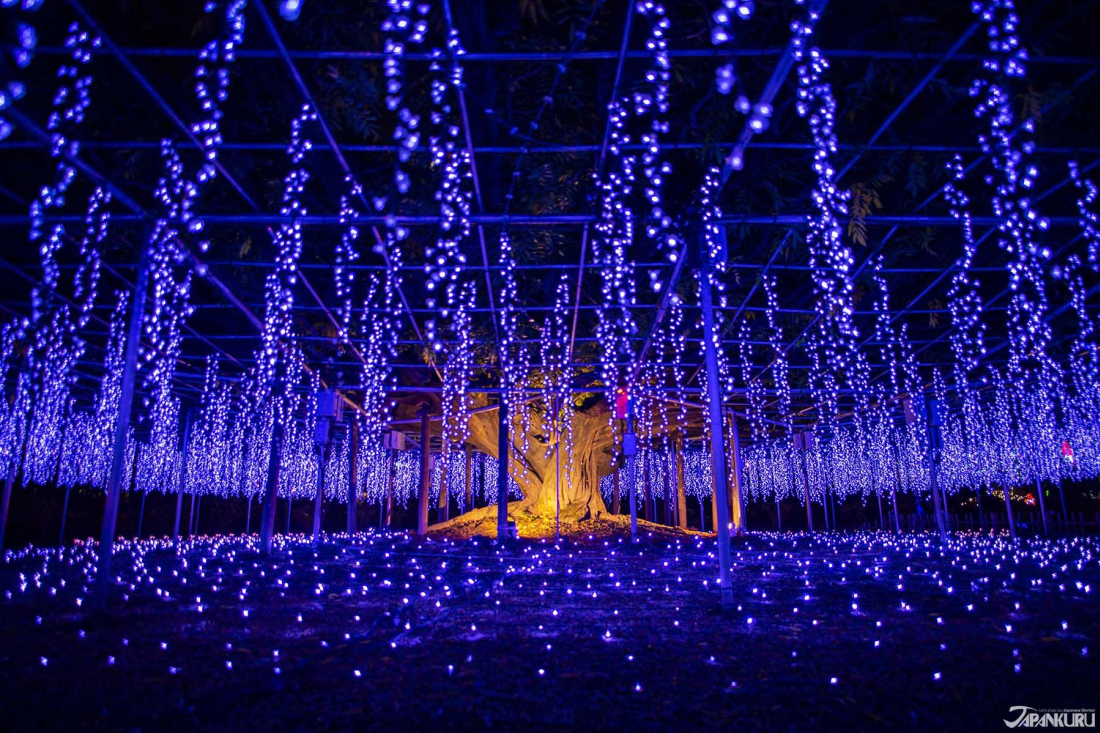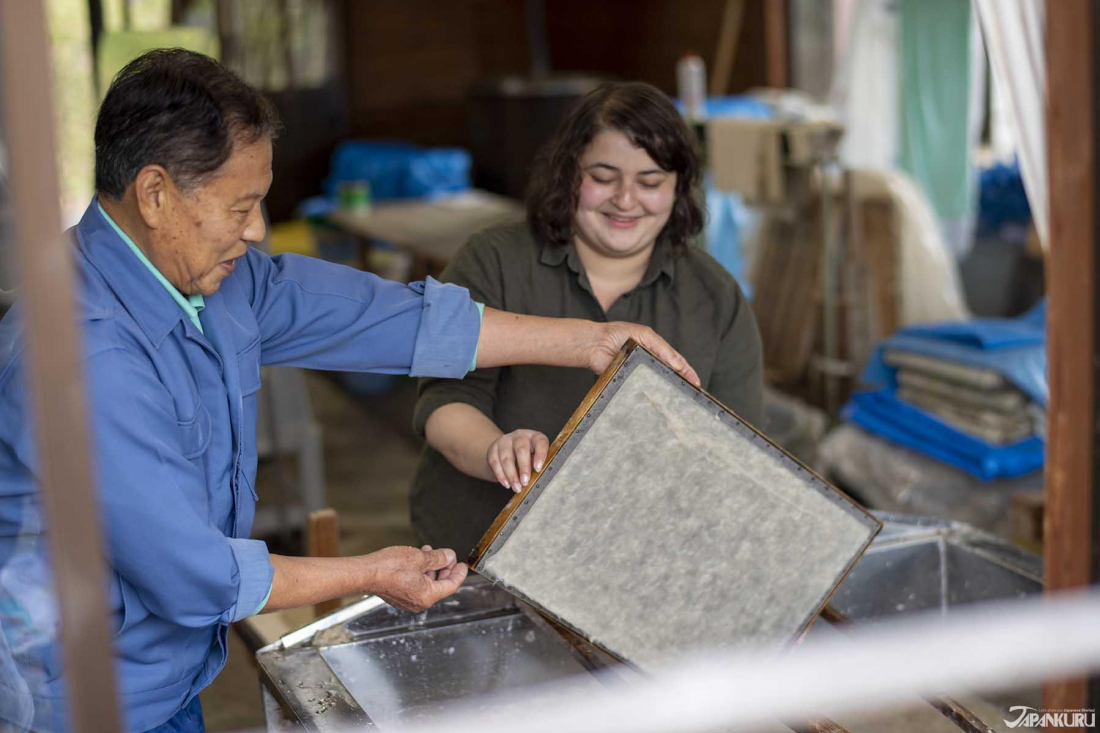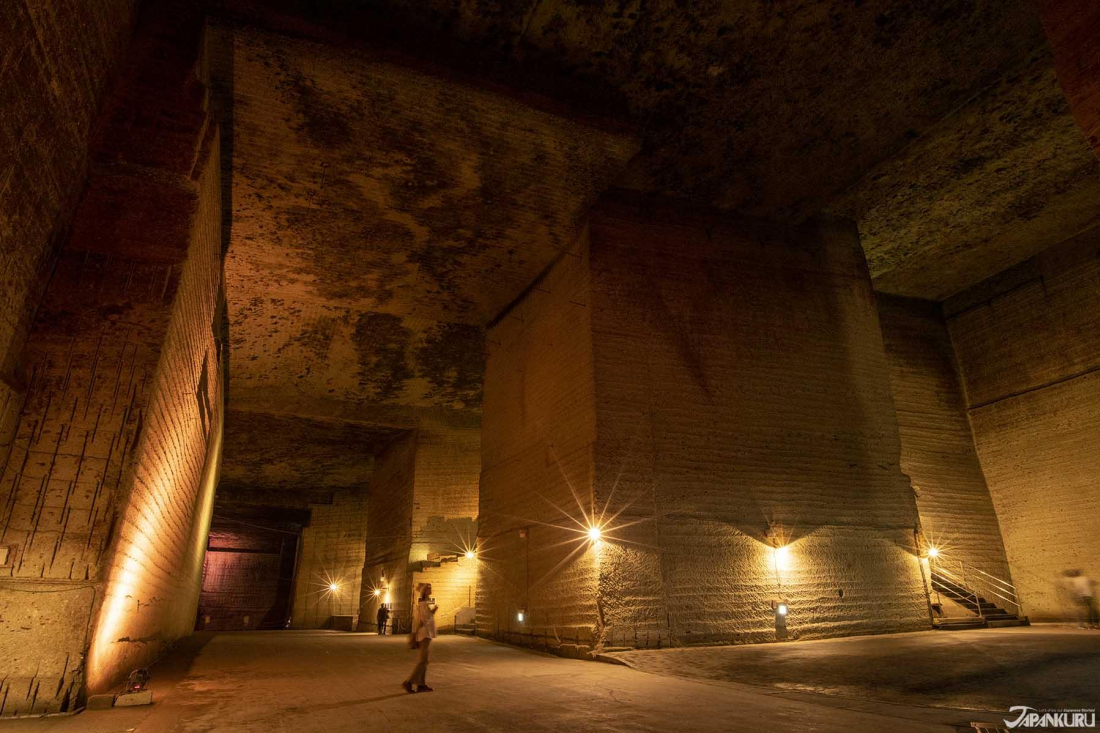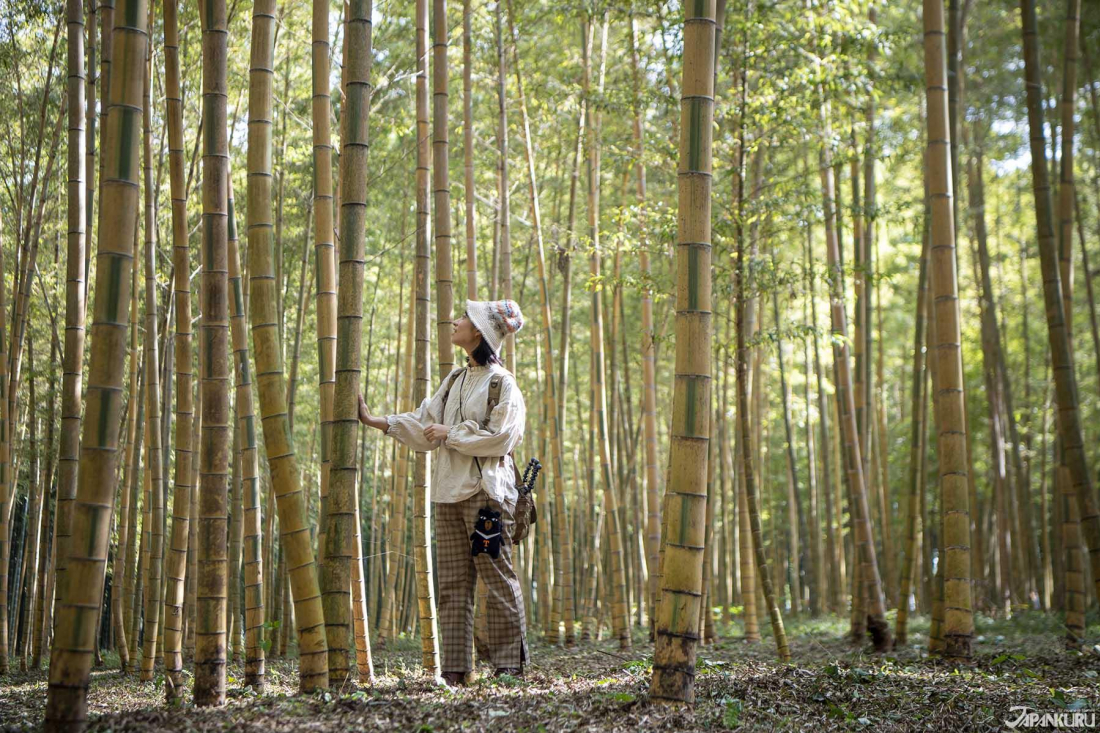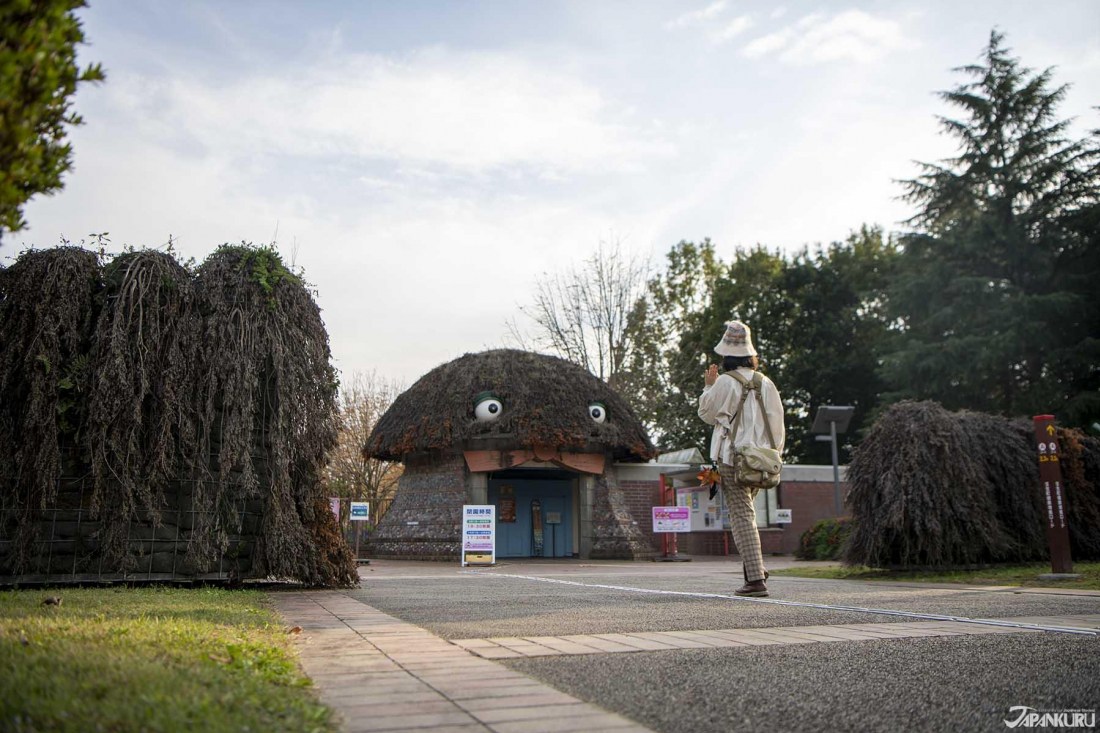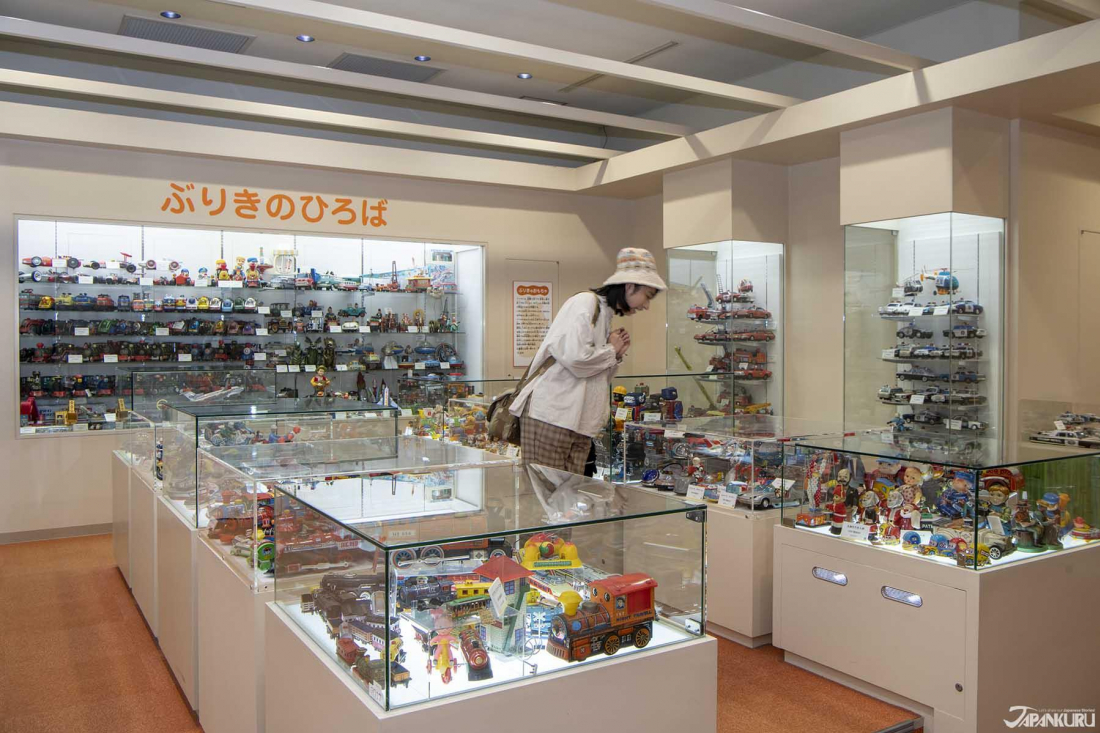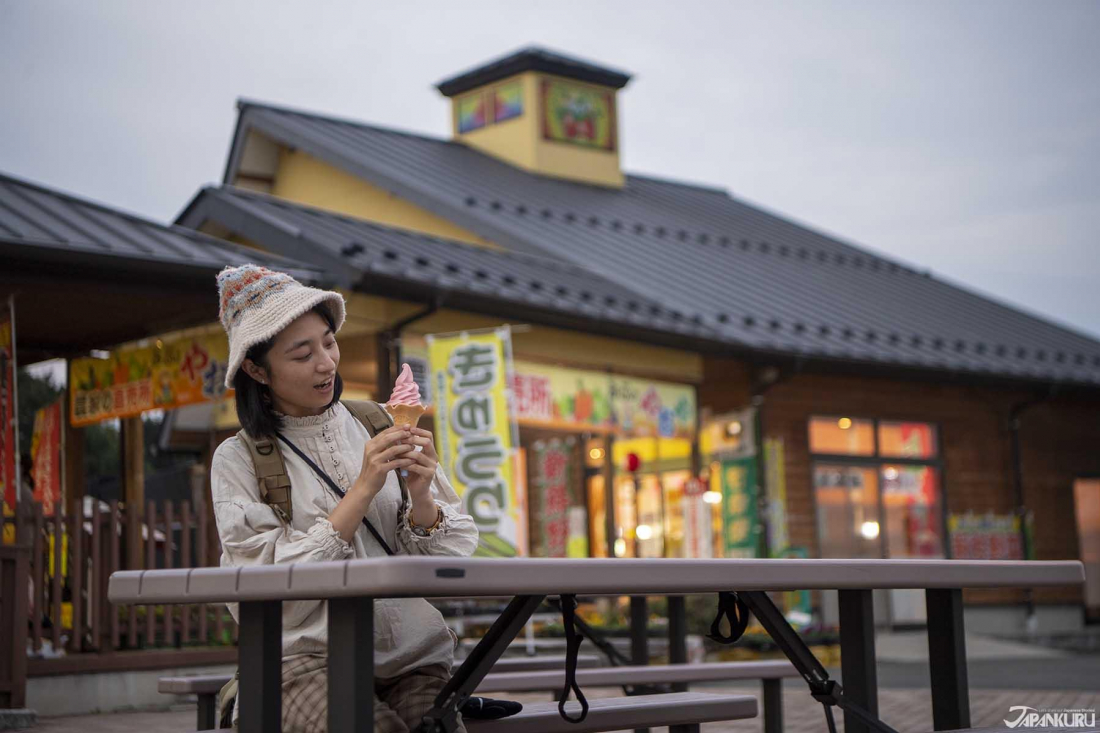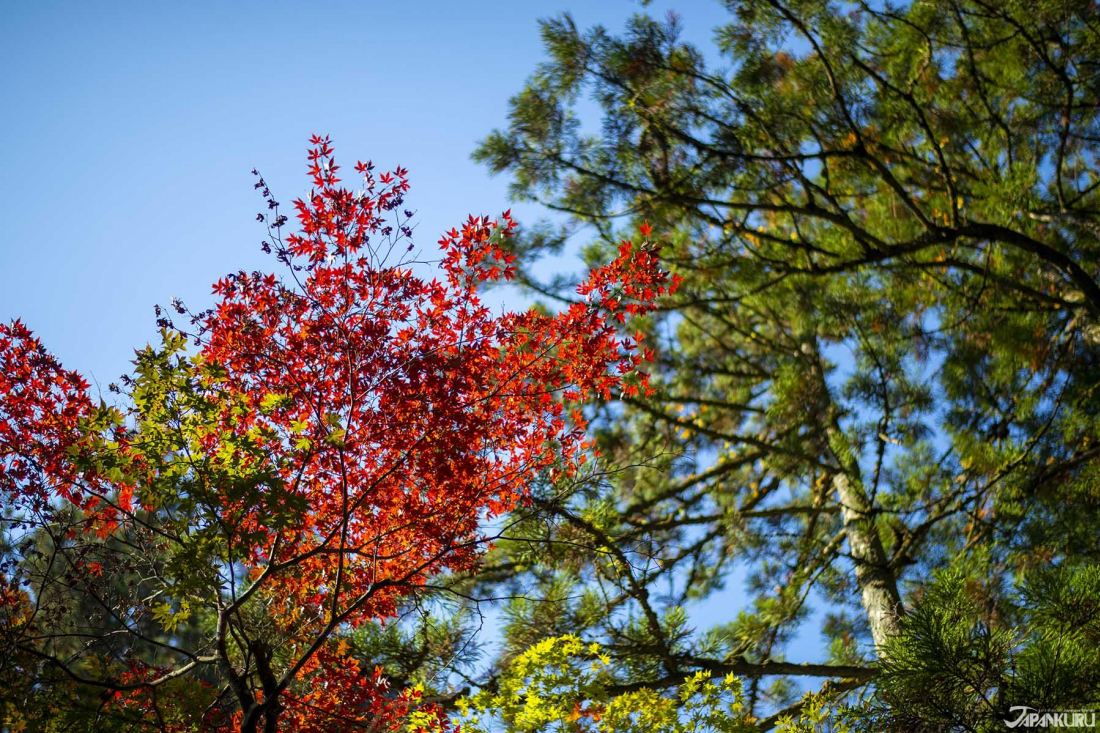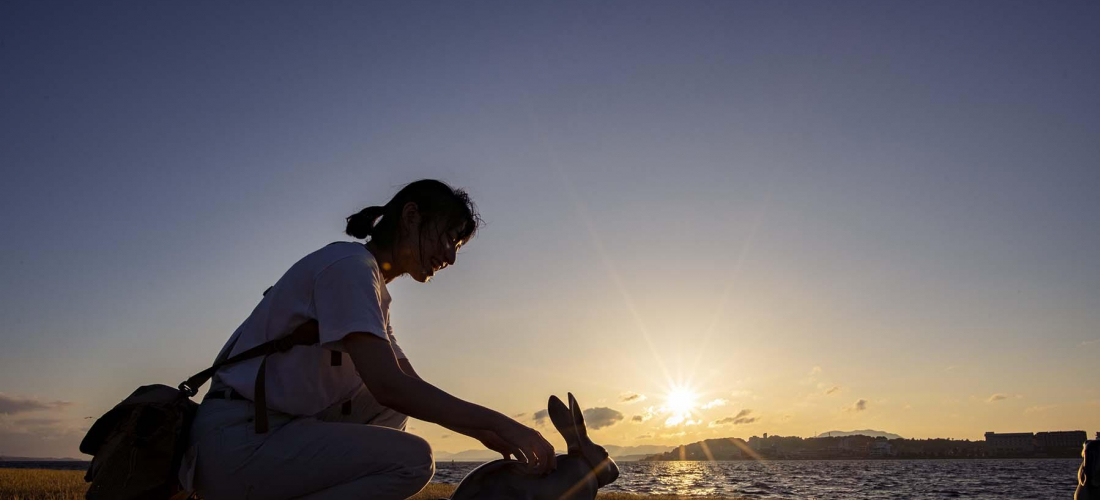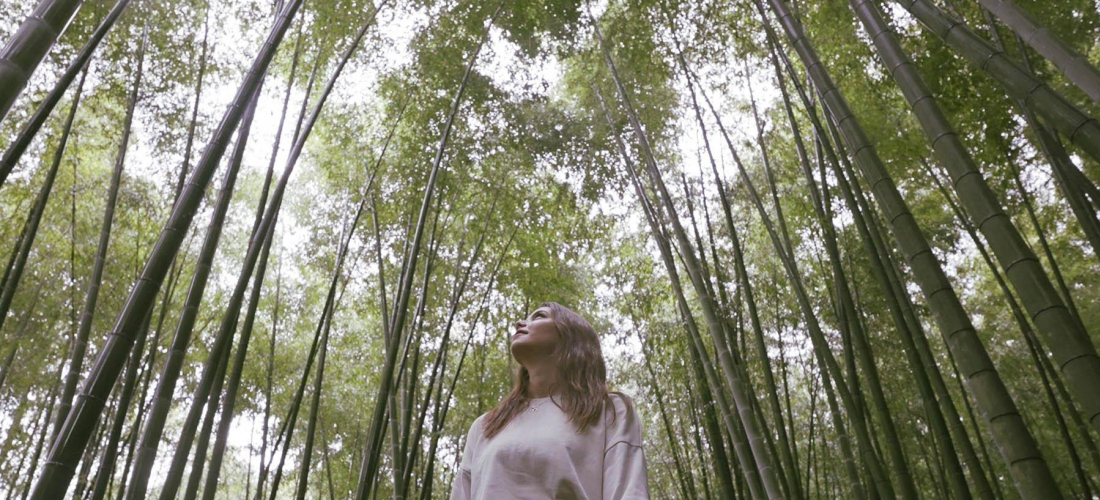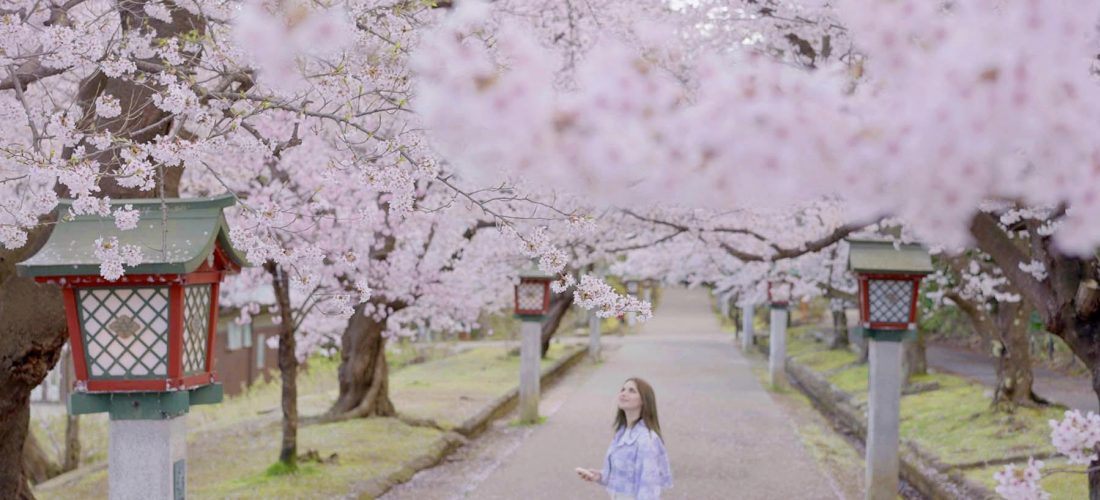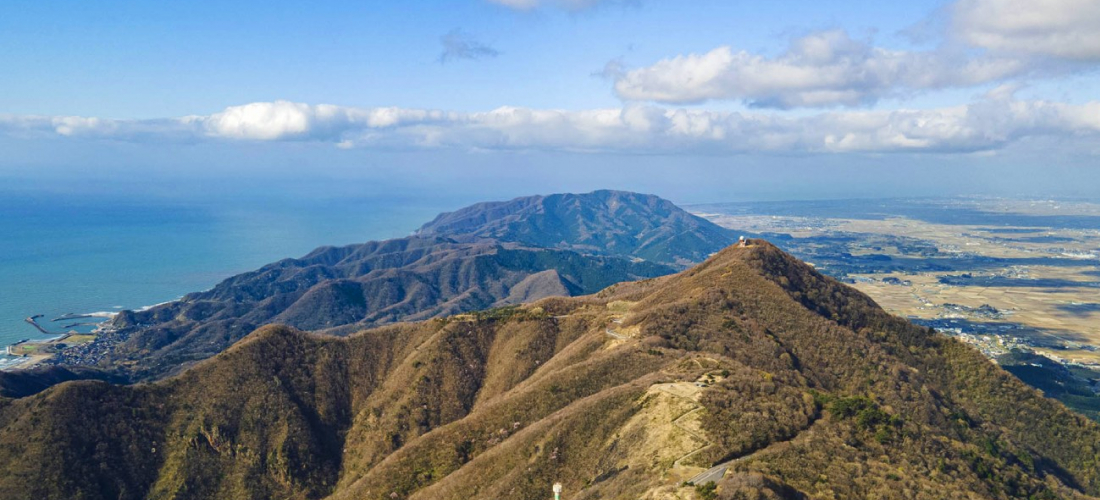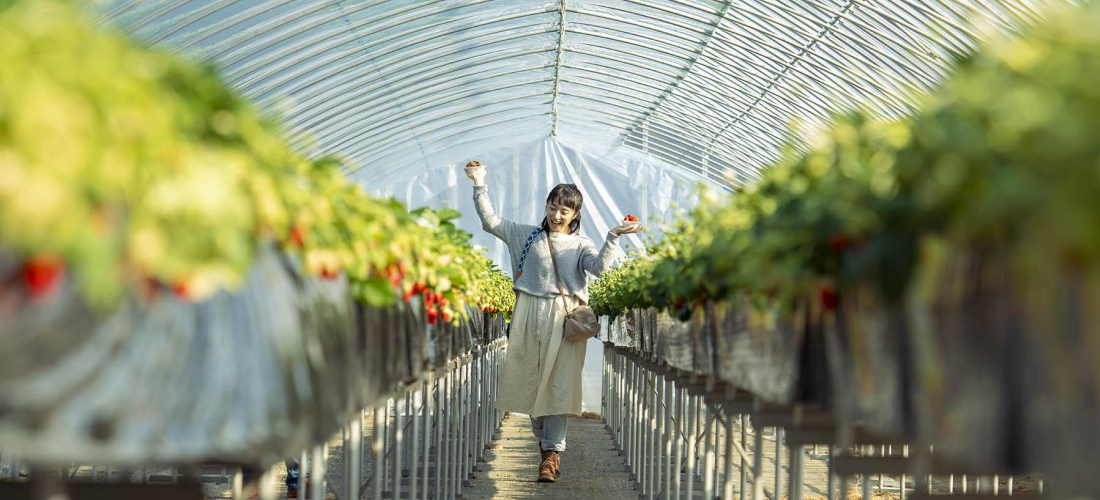
CONTENTS
Une visite éclair de 8 villes et villages de Tochigi et d’innombrables excursions d’automne.
Pourquoi visiter Tochigi en automne?
Au Japon, l'automne signifie qu'il est temps pour les koyo, et bien qu'il y ait beaucoup d'endroits autour de Tokyo pour profiter du rouges et jaune des feuilles d'automne incandescentes, il existe une option encore meilleure qui vous attend pas très loin. Montez à bord d'un shinkansen pendant environ une heure et élargissez vos horizons vers une autre partie de la région du Kanto, avec moins de monde mais des panoramas naturels plus spectaculaires, parsemés de belles destinations d'automne. Marchez sur les traces de personnages historiques et marchez dans des fourrés de bambous d'un autre monde. Passez l'après-midi à créer vos propres créations en papier washi japonais et la soirée à vous promener dans des jardins baignés de lumières scintillantes. Profitez de la beauté du Japon à l'automne, ainsi que de toutes les surprises incontournables et hors des sentiers battus de cette région unique du Japon: la préfecture de Tochigi.
1. Shimotsuke (下野市)
Tenpyo Park (天平の丘公園)
Le parc Tenpyo, également appelé parc Tenpyonooka, est un mélange spacieux de champs et de zones boisées qui changent au fil des saisons, et de quelques ruines historiques fascinantes qui ont résisté à l'épreuve du temps. Au printemps, le parc est l'un des sites de hanami les plus célèbres de Tochigi, car les fleurs de cerisier à fleurs doubles fleurissent jusqu'à la fin de la saison, et à l'automne, tout le parc est enveloppé à la fois de rouges et de jaunes koyo. Grâce aux structures historiques toujours sur le sol du parc, la zone propose également des musées sur l'histoire et la culture locales.
Après une promenade dans le paysage automnal, faites une pause et grignotez quelque chose au café du parc, Yoakemae, construit à l'intérieur d'une ferme kominka rénovée. Les visiteurs peuvent déguster du café frais et des plats préparés avec des ingrédients locaux, tout en ayant un avant-goût de ce que c'est de vivre dans une maison japonaise traditionnelle, grâce au sol en tatami confortable et à la véranda donnant sur la végétation
Les amateurs d'histoire et d'archéologie ne voudront pas manquer les attractions historiques du parc, nichées parmi le feuillage. Les anciennes tombes «kofun» découverts autour du parc, Otokazuka Kofun (オ ト カ 塚 古墳) et Kabutozuka Kofun (甲 塚 古墳), remontent à la fin du VIe siècle, et les vestiges encore plus frappants du temple Shimotsuke Kokubunji (下野 国 分 寺 跡 ) ont été construits à l'origine dans la 13e année de Tenpyo (-741).
Tenpyo Park (天平の丘公園)
993-1 Kokubunji, Shimotsuke, Tochigi
Official Website (jp) | Shimotsuke Official Website (jp)
2. Kanuma (鹿沼市)
Furumine Shrine (古峯神社)
La plupart des Japonais entendent «Tochigi» et pensent aux sanctuaires et aux temples de Nikko. Mais Shodo, le prêtre qui a fondé le célèbre complexe de temples et de sanctuaires au sommet d'une montagne, a reçu sa propre formation bouddhiste au sanctuaire de Furumine. Pour cette raison, le sanctuaire est parfois appelé le lieu de naissance de Nikko!
Ces jours-ci, les gens se rendent au sanctuaire Furumine de tout le pays pour collecter des goshuin de type tengu, les messagers des dieux et symboles du sanctuaire. On dit que le tengu protège les visiteurs contre les incendies et les accidents sur la route ou en mer, tout en promettant bonne fortune.
Si les visiteurs ne viennent pas au sanctuaire Furumine pour le tengu, ils sont probablement là pour le fabuleux aménagement paysager et le feuillage d'automne du jardin Kohoen (古 峯 園), sur le terrain du sanctuaire. Le jardin kaiyu-shiki (廻遊 式), conçu autour d'un plan d'eau alimenté par la claire rivière Oashi, est entouré de flancs de montagnes colorés, ce qui en fait un endroit paisible pour profiter de la beauté de la saison.
Furumine Shrine (古峯神社)
3027 Kusagyu, Kanuma, Tochigi
Official Website (jp)
La valley Oashi (大芦渓谷) & et le pont Shiraidaira (白井平橋)
Un autre des endroits d'automne les plus populaires de Kanuma est la vallée d'Oashi, où vous pourrez vous promener le long des galets en direction de la cascade en amont, tout en admirant l'eau claire qui se précipite devant les feuilles d'automne colorées.
Le pont Shiradaira s'étend de l'autre côté de la rivière, et si vous planifiez votre voyage correctement, vous pourrez peut-être voir les énormes érables de chaque côté du pont se transformer en un joli tunnel de feuilles rouges.
Oashi Valley (大芦渓谷) / Shiraidaira Bridge (白井平橋)
1892 Kusagyu, Kanuma, Tochigi
Kanuma Official Website (jp)
3. Nikko (日光市)
Sanctuaire Nikko Toshogu (日光東照宮)
Nikko était autrefois un endroit où les sanctuaires shinto et les temples bouddhistes se mélangeaient, reflétant la fusion unique des croyances spirituelles du Japon, et le complexe de toutes ces structures religieuses s'appelait "Nikko-san" (日光 山). Mais dans la 4e année de l'ère Meiji (1868), le gouvernement japonais décida de séparer strictement le shinto et le bouddhisme, créant le Nikko que nous connaissons maintenant: deux sanctuaires, Nikko Futarasan (日 興 二 荒山 神社) et Nikko Toshogu (日光 東 照 宮), à côté d'un temple, Nikkozan Rinnoji (日光 山 輪 王 寺). Avec le titre «Nikko-san» maintenant utilisé exclusivement pour le temple bouddhiste, l'ensemble du complexe est parfois appelé «Ni-sha-ichi-ji» de Nikko (二 社 一 寺), littéralement «deux sanctuaires un temple».
Parmi ces trois sanctuaires et temples, Nikko Toshogu est le plus célèbre, en tant que lieu de repos de Tokugawa Ieyasu, unificateur du Japon, et un site du patrimoine mondial de l'UNESCO. Le sanctuaire joliment décoré est l'une des premières attractions auxquelles les gens pensent quand ils entendent Tochigi.
Temple Nikkozan Rinnoji (日光山輪王寺)
Après Tokugawa Ieyasu, la troisième génération de shogun japonais était le petit-fils de l'unification, Tokugawa Iemitsu, dont le mausolée constitue le Taiyuin (大猷 院) voisin, au temple Nikkozan Rinnoji. Les visiteurs ont tendance à remarquer les grands arbres entourant les bâtiments du temple, qui sont particulièrement beaux à l'automne, mais le bâtiment lui-même est un point d'intérêt pour les amateurs d'architecture japonaise. L'architecture Gongen-zukuri (権 現 現 造) a d'abord été vue dans d'autres bâtiments, mais la forme de Taiyuin est considérée comme la version finale et finie de ce style architectural classique.
Le pont Shinkyo (神橋)
Ce pont pittoresque fait partie du sanctuaire Futarasan, construit à l'époque d'Edo (1603-1868), et de nos jours, il est considéré comme l'un des trois ponts les plus insolites du Japon. Même entouré de feuilles d'automne rouges et jaunes, la couleur rouge vif du pont le fait ressortir de la toile de fond naturelle, et il y a toujours des gens debout à proximité pour prendre des clichés de cet endroit "instagrammable".
Nikko's Shrines and Temples (日光二社一寺)
Sannai, Nikko, Tochigi
Official Nikko Sightseeing Page (jp)
4. Otawara (大田原市)
Temple Daioji (大雄寺)
Ce temple est l'un des sept au Japon à avoir été érigé en bien culturel important grâce au magnifique toit de chaume du bâtiment du temple, soigneusement posé en couches épaisses très impressionnantes. Entre la beauté de l'architecture traditionnelle et les feuilles d'automne du jardin garnis d'arbres, c'est un endroit charmant et une atmosphère unique et tranquille.
Après avoir parcouru les sentiers moussus du jardin, essayez de vous débarrasser du stress de voyage ou des pensées négatives avec une méditation zen tranquille dans le monastère. Parfois, il est important de prendre un moment et de trouver un peu de paix au milieu d'une journée bien remplie, n'est-ce pas?
Daioji Temple (大雄寺)
450 Kurobanetamachi, Otawara, Tochigi
Official Website (jp)
5. Ashikaga (足利市)
L’école Ashikaga (足利学校)
L'école Ashikaga, également appelée Ashikaga Gakko, est la plus ancienne école du Japon, et elle se trouve ici à Tochigi. Elle a été créé pour la première fois il y a plus de 1000 ans, lorsque des moines sont venus à l'établissement pour étudier la littérature, la science, des sujets plus mystiques et l'œuvre de Confucius. Le bâtiment actuel a été restauré pour retrouver sa gloire de l'époque d'Edo, y compris un autre joli toit de chaume, et à l'intérieur, vous pouvez voir à quoi ressemblait la vie scolaire à l'époque. Passez un peu de temps à faire semblant d'être de retour à l'école tout en vous promenant dans les jardins japonais sculptés, beaucoup plus beaux que votre cour d'école moyenne.
Ashikaga School (足利学校)
2338 Shoheicho, Ashikaga, Tochigi
Official City Page (jp)
Parc floral d’Ashikaga (あしかがフラワーパーク)
Si vous recherchez des expositions lumineuses dans la région de Tokyo, vous avez quelques choix, mais l'ampleur et le niveau des lumières d'Ashikaga Flower Park en font un lieu d'exception. Parce que le lieu est avant tout un jardin botanique ou un parc de fleurs, les lumières scintillantes et les fleurs épanouies se combinent de façons uniques et magnifiques.
La partie couverte de glycine est particulièrement populaire et les lumières violettes changeantes sont suspendues comme de vraies vignes de glycine pour créer une ambiance proche de celle d'un livre de contes (celui où le héros tue des démons, peut-être). L'atmosphère magique de l'endroit ne peut tout simplement pas être transmise à travers une image ou deux, nous vous recommandons donc vivement de la vivre par vous-même.
Ashikaga Flower Park (あしかがフラワーパーク)
Hasamacho, Ashikaga, Tochigi
Official Website (en)
6. Sano (佐野市)
Le centre du papier japonais washi de Hikoma (飛駒和紙会館)
La ville de Sano est connue pour ses ramen locaux, que vous pouvez certainement gouter pendant que vous y êtes, mais nous vous recommandons également d'essayer l'atelier de fabrication de papier washi! Au Hikoma Washi Paper Center, vous pouvez tout apprendre sur le processus de création du papier de mûrier traditionnel japonais, en commençant par l'écorce de mûriers «kozo» cultivés à l'extérieur en utilisant l'eau claire et fraîche de Sano, jusqu'à la fabrication de feuilles de papier washi . Essayez de faire votre propre washi à ramener à la maison!
Hikoma Washi Paper Center (飛駒和紙会館)
2299 Hikomacho, Sano, Tochigi
Official Page (jp)
7. Utsunomiya (宇都宮市)
Musée d’histoire d’Oya (大谷資料館)
La roche d'Oya qui était autrefois extraite de ces vastes grottes souterraines est un produit local célèbre pour la ville d'Utsunomiya, et les habitants l'exploitent depuis au moins 1400 ans. Après plus d'un millénaire de pierre d'Oya taillée dans le sol, les grottes ont atteint 20 000 m², et en descendant 30 m sous terre, on a l'impression d'entrer dans un autre monde. Mais les panneaux sur les murs vous rappellent où vous êtes, partageant des morceaux d'histoire et des informations intéressantes sur les grottes.
La température moyenne toute l'année est d'environ 7 ° C (45 ° F) à l'intérieur des cavernes! Grâce à son atmosphère inoubliable, l'espace a même été utilisé comme lieu de tournage de films et de quelques clips vidéo, ainsi que de concerts en direct.
Oya History Museum (大谷資料館)
909 Oyamachi, Utsunomiya, Tochigi
Official Website (jp)
Forêt de bambou de la ferme Wakayama (若山農場)
Notre dernier arrêt à Utsunomiya semblait hors de ce monde, mais avec la lumière du soleil tachetée qui brille à travers les bosquets sans fin de grands bambous qui s'élèvent au-dessus de nos têtes, l'atmosphère était totalement différent de la carrière morose d'Oya. Trois générations d'agriculteurs sillonnent les terres de la ferme de Wakayama, et y cultivent du bambou depuis 100 ans, profitant de l'environnement naturel bien adapté d'Utsunomiya, où le bambou pousse à pleine hauteur en une question de deux ou donc des mois. Le bambou s'est épanoui et la ferme Wakayama a commencé à cultiver de plus en plus de variétés, même certaines qui sont assez rares. Maintenant, la bambouseraie de la ferme est un endroit pour profiter des cinq sens, des nuances vives de vert au bruit du vent sifflant à travers le bambou.
Ne laissez pas les intempéries vous décourager ― La ferme Wakayama est d'une beauté unique sous la pluie ou la neige, et certains photographes affluent même vers les bosquets pour avoir la chance de voir le bambou recouvert de flocons. C'est aussi un lieu de tournage populaire pour les films et les publicités, et quand il fait beau, vous verrez souvent des cosplayers prendre des photos instagrammables parmi les bambous. Là encore, c'est aussi un endroit idéal pour apporter un livre, s'asseoir et se détendre.
Wakayama Farm (若山農場)
2018 Takaragihoncho, Utsunomiya, Tochigi
Official Website (jp)
8. Mibu (壬生町)
Tochigi Wanpaku Park (とちぎわんぱく公園)
Une fois que vous avez dépassé l'esprit énorme de la forêt qui garde l'entrée du parc Tochigi Wanpaku, vous trouverez des champs de verdure et des jardins de fleurs, des terrains de jeux, des mascottes conçues par le Studio Ghibli et même "Momo-chan le dinosaure" qui ne veux que vous accueillir!
Musée du jouet de Mibumachi (壬生町おもちゃ博物館)
Le musée du jouet Mibumachi est niché à l'intérieur du parc, et la collection du musée comprend des jouets anciens et nouveaux, de partout. Il y a des salles de jouets avec lesquelles vous pouvez jouer, des salles de jouets locaux fabriqués à Tochigi et des présentoirs mettant en vedette certains de vos personnages préférés. (Vous aimez Pokemon? Gundam? Peut-être Mario? Ils sont tous là!) C'est nostalgique pour les adultes, mais pour les enfants, le musée est un rêve devenu réalité, nous le recommandons donc à toutes les familles voyageant à Tochigi!
Tochigi Wanpaku Park (栃木わんぱく公園) / Mibumachi Toy Museum (壬生町おもちゃ博物館)
2273/2300 Kuniya, Mibu, Shimotsuga District, Tochigi
Wanpaku Park Website (jp)
Toy Museum Website (jp)
Michi-no-Eki Mibu (道の駅みぶ)
Vous êtes presque prêt à rentrer chez vous après votre voyage à travers Tochigi? N'oubliez pas de passer d'abord à cette petite halte! Les magasins de Michi-no-Eki Mibu vendent toutes sortes de souvenirs, ainsi que des fruits frais locaux et des produits de toutes sortes, pour ramener de bons souvenirs de Tochigi une fois que vous êtes chez vous. Et bien sûr, puisque le produit local le plus célèbre de Tochigi est la fraise, il existe de la glace à la fraise et des bonbons de toutes sortes.Avec un cône dans une main vous pouvez toujours chercher les derniers souvenirs à prendre avant de quitter Tochigi!
Michi-no-Eki Mibu (道の駅みぶ)
1870-2 Kuniya, Mibu, Shimotsuga District, Tochigi
Official Website (jp)
Rendez-vous à Tochigi à l’automne prochain!
Des parcs ouverts et des maisons japonaises traditionnelles, des jardins élégants et des sites appartenant au patrimoine mondial, le pouvoir de guérison des temples, des affichages de lumière spectaculaires, une fabrication spéciale de papier washi, de nouveaux mondes souterrains et parmi les bambous, et même des endroits conçus pour les voyages en famille, vous avez peut-être remarqué qu'un voyage d'automne à Tochigi comporte une variété d'endroits à visiter! Et avec Tochigi à une courte distance de Tokyo, avoir toutes ces superbes destinations élargit vraiment les options pour votre prochaine escapade.
La prochaine fois, nous examinerons les fraises fraîches, les objets artisanaux uniques et toutes les autres surprises Tochigi en hiver, alors gardez un œil sur notre prochain article sur Tochigi! Et n'oubliez pas de nous suivre sur twitter, instagram, et facebook.
PROFILE
Follow us @Japankuru on Facebook, Instagram, and Twitter!
COMMENT
FEATURED MEDIA
VIEW MORE
・The new Tokyo flagship for Volcom Japan is a center for all things skateboarding, street fashion, art, and culture, all in the heart of Shibuya! ・Volcom日本旗艦店東京澀谷登場 本格派滑板街頭潮流藝文新據點 #Volcom #japankuru #shibuya #日本購物 #日本潮流 #日本街頭時尚 #澀谷 #東京購物 #東京購物推薦 #東京潮店 #澀谷潮店 #滑板 #雪板 #衝浪 #볼컴 #시부야

Which snacks make the best Japanese souvenirs?~ Jaga Pirika ~ 일본과자 선물 뭐하지?~자가피리카 편~ #pr #calbee #jagapokkuru #japanesesnacks #japanesefood #japanesesouvenir #japantravel #japantrip #naritaairport #hokkaido #나리타국제공항 #일본여행선물 #흔하지않은기념품 #일본쇼핑리스트 #일본과자추천 #고구마과자 #일본간식추천 #일본면세점쇼핑 #개별포장 #일본감자칩 #도쿄나리타공항면세점 #현지인추천 #일본여행 #일본기념품리스트 #자가포쿠루 #자가피리카

Asakusa's Sanja Matsuri, one of the biggest festivals in all of Tokyo, is almost here! Make sure you check out the festival route so you don't miss all the festivities this May. #asakusa #sanjafestival #sanjamatsuri #asakusashrine #sensoji #sensojitemple #japanesefestival #shintoshrine #japaneseculture #tokyo #tokyotrip #tokyotravel #asakusasightseeing #matsuri #japantrip #japantravel #springinjapan #tokyotravel #japankuru #산자마츠리 #아사쿠사 #일본마츠리 #일본여행 #일본5월

Odaiba's DiverCity Tokyo Plaza is home to the famous real-size 20m-tall Unicorn Gundam, and the popular shopping center has even more Gundam on the inside! Check out the Gundam Base Tokyo on the 7th floor for shelves upon shelves of Gunpla, and the Gundam Base Tokyo Annex on the 2nd floor for cool anime merchandise. Both shops have tons of limited-edition items! #pr #odaiba #tokyo #tokyotrip #japantrip #japantravel #PR #divercity #divercitytokyoplaza #tokyoshopping #gundam #unicorngundam #gundambasetokyo #anime #otaku #gunpla #japankuru #오다이바 #다이바시티도쿄 #오다이바건담 #건담 #일본건담 #건프라 #건담베이스도쿄

Evangelion, in miniature!? Tokyo's SMALL WORLDS Miniature Museum is actually a must-see for anime lovers, thanks to the tiny Evangelion Hangar and Tokyo-III... plus a whole universe of other scenes both real and fictional. #smallworlds #smallworldstokyo #tokyotrip #tokyotravel #evangelion #eva #anime #miniature #miniatures #animefigure #japantrip #japantravel #에반게리온 #스몰월드 #에반겔리온 #スモールワールズ #오다이바 #아리아케

Have you sat down for a snack at Sumida Aquarium yet? This aquarium next to Tokyo Skytree is known for its penguins and garden eels, but we can't get enough of their cute snacks! There are lots of good seats around the aquarium, too, so it almost feels like one big cafe. 🐧 • Find out more at Japankuru.com! (Link in bio.) • #japankuru #sumidaaquarium #skytree #tokyoskytree #solamachi #sumida #tokyo #tokyotrip #tokyotravel #aquarium #japanesesweets #themecafe #すみだ水族館 #Japan #日本 #일본 #Japon #ญี่ปุ่น #Japão #япония #japantravel #日本旅行 #日本旅遊 #japan_of_insta #japantrip #traveljapan #japan🇯🇵 #igerstokyo #explorejapan

For anime fans, the Evangelion areas at Small Worlds Miniature Museum are a must see! The tiny miniature people in the Evangelion Hangar look like ants beneath the moving Unit-01, Unit-00, and Unit-02! And over in Tokyo-III, characters like Shinji, Rei, and Katsuragi live life on a miniature scale. #odaiba #tokyo #tokyotrip #japantrip #japantravel #ariake #smallworlds #miniaturemuseum #smallworldstokyo #tokyotravel #evangelion #eva #anime #miniature #miniatures #animefigure #japankuru #스몰월드 #에반게리온 #오다이바 #오다이바관광 #오다이바스몰월드 #미니어쳐

